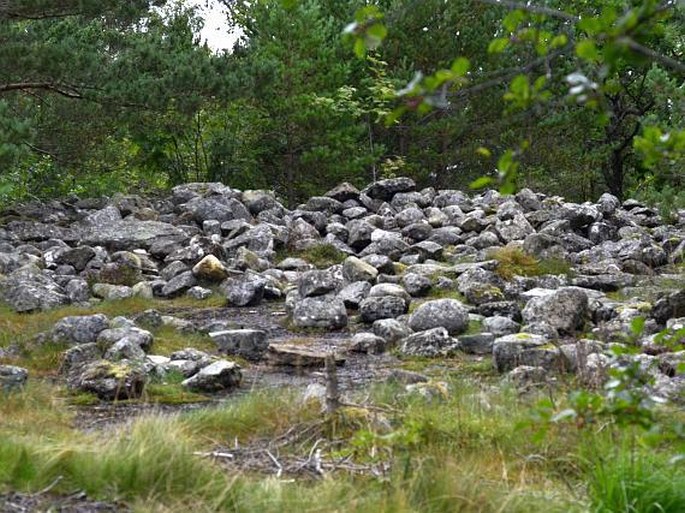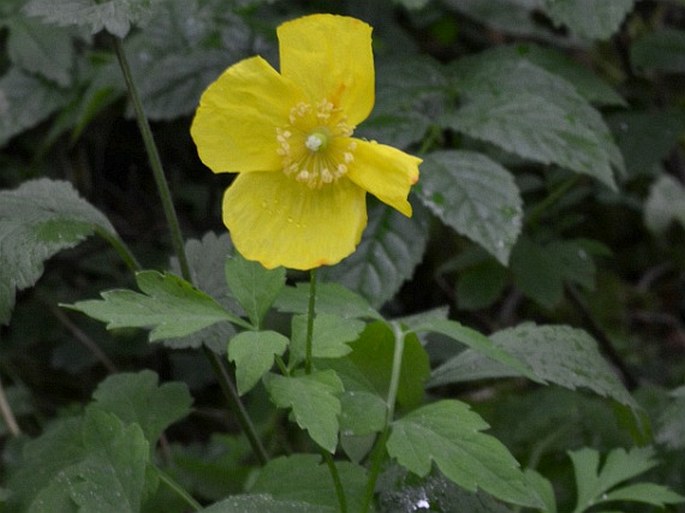Syn.: Argemone cambrica (L.) Desf., Cerastites cambrica (L.) Gray, Papaver cambricum L., Stylophorum cambricum (L.) Spreng.
Family: Papaveraceae Juss.

Distribution: It occurs in western Europe – Great Britain, Ireland, northern Spain, France, naturalized on the Scandinavian Peninsula.
Ecology: Rocky copses and woods, also around walls, gardens, roadsites and paving slabs. It prefers shady sites; often on a calcareous soil. Hemicryptophyte. Flowers from May to August.

Description: A perennial herb with a creeping, woody rhizome producing single or few stems. The stem is 30–60 cm high, with a basal leaf rosette and 2–4 cauline leaves, glabrous with long spreading hairs. The leaves are petiolated, basal leaves have petiole 8–20 cm long and stem leaves have petiole gradually shorther upwards, blade is ovate or obovate with 3–4 pairs of leaflets which are 5–15 cm long and 4–10 cm wide. Lobes are ovate, coarsely and irregulary toothed and cuneate at the base, lower surface is glaucous and hairy. The flowers are terminal, actinomorphic, up to 75 mm in diameter, with a 17–25 mm long pedicels. sepals are green and rather hairy, quickly fall off after the flower is opened, petals are oblate or obovate, 23–39 mm long and 23–45 mm wide. Stamens are 8–16 mm long, shorther than or as long as ovary, numerous. Capsule is glabrous, eliptical, dark brown, with 4–6 conspicuous ridges and contains black reiculate seeds, 0.9–1.3 mm long.

These images were taken in Norway, western coast near Leirvik (August 2013).


